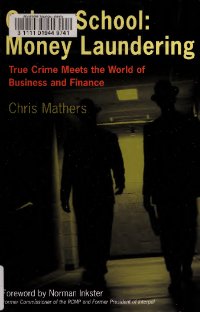By Chris Mathers
In Crime School: Money Laundering, a twenty-year law enforcement veteran of financial crime explains this felony in simple terms. Written anecdotally, the book describes what money laundering is and how the crimes behind it fit together.
Organized criminals operating both domestically and internationally corrupt bankers and subvert national economies through the use of drug money.
This book examines the history of money laundering from ancient times to the cocaine craze of the 1970s to the sophisticated, brutal techniques employed by today's terrorists and organized crime.
Lively and detailed, this book chronicles the stark realities and deadly dynamics of the lynchpin between organized crime and modern terrorism. It's a rare and fascinating look at a deadly world few have ever witnessed and lived to tell the story.
Buffalo, NY: Firefly Books, 2004. 244p.





















